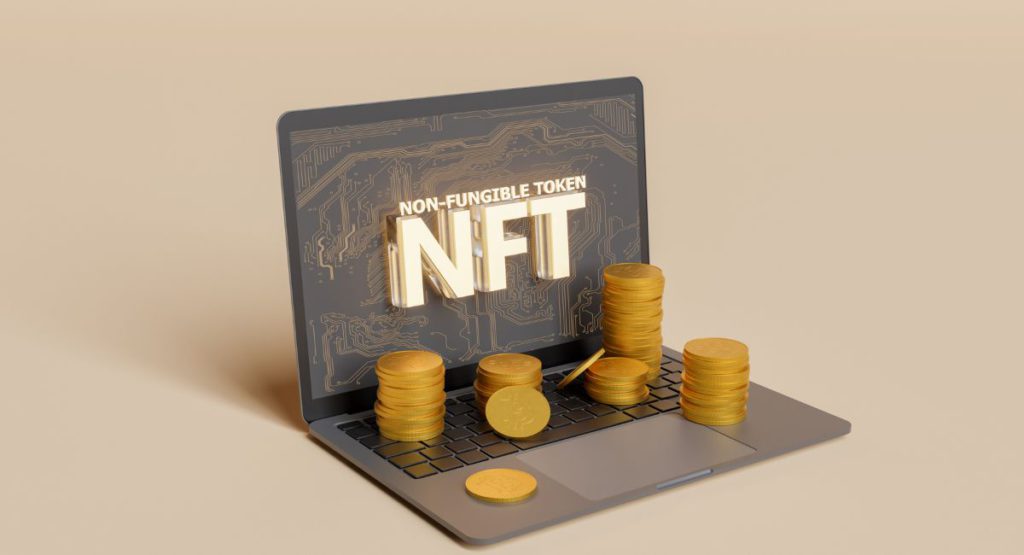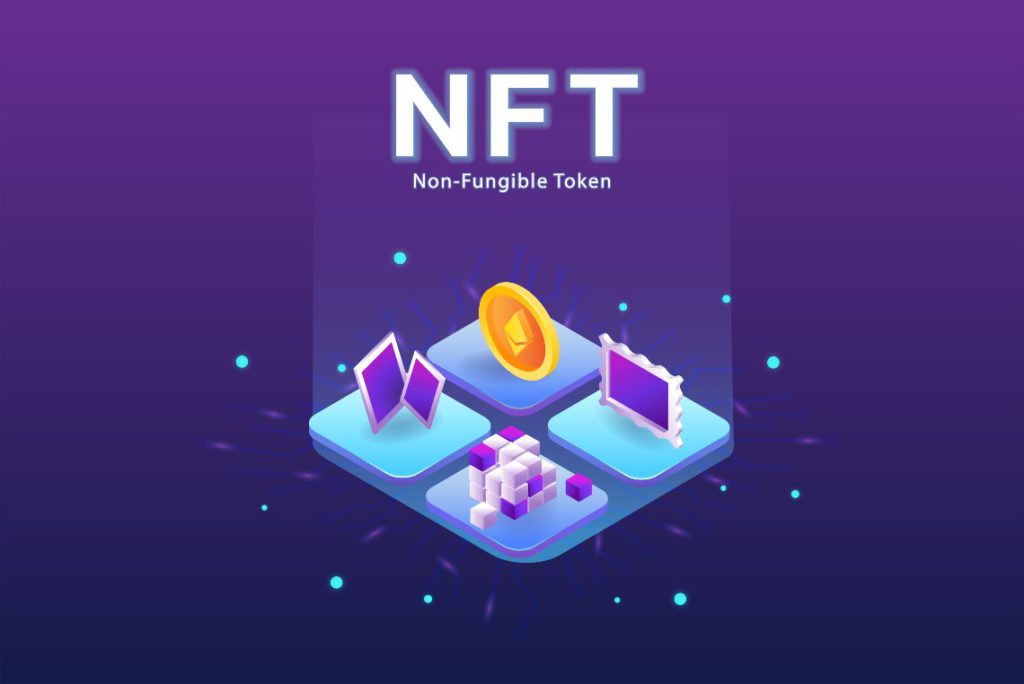How Ethereum And Bitcoin Can Help Surge NFT Sales?

The world of non-fungible tokens (NFTs) has seen explosive growth in recent years, revolutionizing the way we think about ownership, digital assets, and creativity. While NFTs can represent various forms of digital or physical assets, they are predominantly associated with art, collectibles, music, and digital goods. Ethereum and Bitcoin, two of the most prominent cryptocurrencies, play pivotal roles in driving the NFT ecosystem’s expansion and success. In this article, we will explore how Ethereum and Bitcoin contribute to the surge in NFT sales and their impact on this transformative market.
The NFT Market’s Explosive Growth

In recent years, the world of non-fungible tokens (NFTs) has experienced a meteoric rise, characterized by a surge in popularity, high-profile sales, celebrity endorsements, and a thriving community of artists, creators, and collectors. This section delves into the remarkable growth of the NFT market and its ever-increasing significance within the broader blockchain ecosystem.
Understanding the NFT Phenomenon
Non-fungible tokens, or NFTs, represent unique digital assets using blockchain technology. They are indivisible, irreplaceable, and serve as digital certificates of ownership. What sets NFTs apart is their ability to verify the authenticity and provenance of digital or physical items in a tamper-proof and transparent manner.
Explosive Growth and Popularity
1. High-Profile Sales:
NFTs have gained immense attention due to record-breaking sales of digital artworks, collectibles, and virtual real estate. Notable examples include:
- Beeple’s “Everydays: The First 5000 Days”: The sale of this digital collage for $69 million in March 2021 captured headlines and underscored the commercial potential of NFT art.
- CryptoPunks and Bored Ape Yacht Club: These collections of unique NFT characters and avatars have drawn fervent collectors and investors, with some individual pieces selling for millions of dollars.
- NBA Top Shot: This platform allows users to buy, sell, and trade officially licensed NBA collectible highlights. A single Top Shot moment featuring LeBron James sold for over $200,000.
2. Celebrity Endorsements:
Celebrities from various industries, including music, film, sports, and art, have embraced NFTs. They’ve launched their digital collectibles, art pieces, and exclusive content, contributing to the mainstream adoption of NFTs.
3. Growing Community:
The NFT community has rapidly expanded, bringing together artists, creators, collectors, and enthusiasts. Social media platforms, online forums, and NFT marketplaces have become hubs for discussions, collaborations, and NFT trading.
NFT Market Value
1. Billions of Dollars:
The NFT market’s total value has reached unprecedented heights, with billions of dollars invested in various digital assets. This substantial market value underscores the NFT market’s significance within the broader blockchain ecosystem.
2. Market Diversification:
While NFTs initially gained attention in the art and collectibles space, their application has diversified. They are now used in virtual real estate, music, virtual goods, and even traditional industries like real estate and luxury fashion.
3. Adoption in Different Sectors:
NFTs have ventured beyond the digital realm and have been employed in industries like gaming, where in-game items and skins are tokenized as NFTs, and real estate, where properties are represented by digital certificates of ownership.
Future Prospects:
The NFT market’s explosive growth is indicative of a fundamental shift in how we perceive and interact with digital assets. As blockchain technology continues to mature, NFTs are poised to reshape various sectors, from art and entertainment to finance and gaming.
The NFT market’s remarkable expansion is characterized by its increasing popularity, high-profile sales, celebrity involvement, and the growing community of NFT enthusiasts. The market’s total value in the billions of dollars highlights its significance in the blockchain ecosystem. NFTs are not just digital collectibles; they represent a transformative force that is reshaping how we buy, sell, and own digital assets. As the NFT market diversifies and expands into new sectors, it is set to play an even more substantial role in the digital economy of the future.
Also, read – Top 7 PFP NFT Projects That Are Breaking The Sales Record
Ethereum’s Role in NFT Sales

Ethereum, the second-largest cryptocurrency by market capitalization, has played a pivotal role in the explosive growth of the non-fungible token (NFT) market. Its smart contract capabilities, robust blockchain infrastructure, and established standards have made it the go-to platform for creating, trading, and transacting NFTs. In this section, we will explore how Ethereum’s technology and ecosystem contribute to the flourishing NFT sales market.
The Ethereum Blockchain
1. Smart Contracts:
- Programmable Contracts: Ethereum introduced the concept of smart contracts, self-executing contracts with the terms of the agreement directly written into code. Smart contracts automate the creation, issuance, and management of NFTs.
- NFT Standards: Ethereum’s smart contract capabilities have given rise to NFT standards, with ERC-721 and ERC-1155 being the most prominent. These standards define how NFTs are created, owned, and traded on the Ethereum blockchain.
2. Security and Decentralization:
- Trust and Transparency: Ethereum’s blockchain provides a high level of trust and transparency by recording all NFT ownership and transaction data in a tamper-proof ledger. This ensures the authenticity and provenance of NFTs.
- Decentralization: The decentralized nature of Ethereum ensures that NFTs are not controlled by a single entity, reducing the risk of censorship, fraud, or manipulation.
Ethereum’s Dominance in the NFT Space
1. Vast NFT Ecosystem:
- NFT Marketplaces: Ethereum hosts a plethora of NFT marketplaces, including OpenSea, Rarible, SuperRare, and more. These platforms facilitate the creation, buying, selling, and trading of NFTs, making Ethereum the epicenter of NFT activity.
- Artist Communities: Ethereum’s ecosystem has fostered thriving artist communities that create and sell NFT art. This has enabled independent artists to gain recognition and generate revenue through NFT sales.
- NFT Platforms: Various platforms and tools have emerged to make NFT creation and minting accessible to creators. These platforms, often built on Ethereum, simplify the process of turning digital or physical assets into NFTs.
2. NFT Development and Innovation:
- Constant Innovation: Ethereum’s developer community continues to innovate by creating new use cases for NFTs. This includes virtual real estate, virtual goods, music, and even traditional industries like real estate and luxury fashion.
- Cross-Platform Compatibility: Ethereum’s NFT standards, especially ERC-721 and ERC-1155, have achieved cross-platform compatibility. NFTs created on Ethereum can be traded and used in various applications and marketplaces.
- DeFi and NFT Integration: The integration of NFTs with decentralized finance (DeFi) applications on Ethereum opens new possibilities, such as using NFTs as collateral, lending, or staking assets.
Ethereum’s Challenges in NFT Sales
While Ethereum has been instrumental in the NFT market’s growth, it has faced challenges, including:
1. Scalability:
- Network Congestion: Ethereum has experienced network congestion and high gas fees during peak NFT sales periods, impacting transaction costs and speed.
- Scalability Solutions: To address these issues, Ethereum is actively working on solutions like Ethereum 2.0 and Layer 2 scaling solutions, such as Optimistic Rollups and zk-Rollups.
Ethereum’s role in NFT sales cannot be overstated. Its smart contract capabilities, established NFT standards, security, and decentralization have made it the foundation of the NFT market. Ethereum’s vast NFT ecosystem, thriving artist communities, and constant innovation have driven NFT sales to unprecedented levels. As Ethereum continues to address scalability challenges and integrate NFTs into DeFi applications, its influence on the NFT market is set to grow even further, solidifying its place as the blockchain of choice for NFT creation, trading, and sales.
📣BREAKING: Solana beats Ethereum in 24 hour NFT sales for the first time in HISTORY.
SOLANA: $25.5 millon in NFT sales
ETHEREUM: $24.5 million in NFT SALES pic.twitter.com/Jf46RkwhsR— hiddenhunting (@hiddenhunting) July 3, 2023
Bitcoin’s Influence on NFT Sales

Bitcoin, the pioneer and most recognized cryptocurrency, may not directly support non-fungible tokens (NFTs) on its network, but its influence on the NFT market is significant. In this section, we will delve into how Bitcoin indirectly contributes to the surge in NFT sales and the unique synergy between these two digital assets.
Bitcoin as a Store of Value
1. Bitcoin’s Role:
Bitcoin’s primary function as a store of value, often referred to as “digital gold,” indirectly affects NFT sales in several ways:
- Investment Capital: Many individuals and institutions invest in Bitcoin as a long-term store of value or a hedge against economic uncertainties. Bitcoin’s value appreciation can generate substantial profits for investors.
- Profit Realization: When Bitcoin investors profit from their holdings, they often seek opportunities to diversify their gains. Some of these profits find their way into NFT acquisitions and investments.
2. Investor Confidence:
- Stability and Growth: Bitcoin’s stability and consistent long-term growth have instilled confidence in cryptocurrency investments. As a result, investors are more open to exploring various digital assets, including NFTs.
- Diversification: Bitcoin investors view NFTs as a potential diversification strategy. They see NFTs as a way to expand their portfolios beyond cryptocurrencies, further contributing to the NFT market’s growth.
The Bitcoin-NFT Synergy
1. Bitcoin-Backed NFTs:
- Combining Digital Assets: Some NFTs are backed by Bitcoin or represent a portion of Bitcoin, creating a unique blend of both digital assets. These hybrid NFTs can appeal to investors and collectors looking for innovative digital creations.
- Digital Collectibles: Bitcoin-themed NFT collectibles have gained popularity, exemplifying the synergy between Bitcoin and NFTs. These collectibles often feature iconic Bitcoin symbols, logos, and even Bitcoin history.
2. Digital Art and NFTs:
- Artists Incorporating Bitcoin: Digital artists often incorporate Bitcoin themes into their NFT creations. Bitcoin’s visual and cultural significance provides a rich source of inspiration for artists, further linking the two digital ecosystems.
- Crossover Collectors: Collectors who appreciate both Bitcoin and NFTs are drawn to NFT art that intertwines the two worlds. This overlap in collector interest encourages artists to create more Bitcoin-themed NFTs.
Challenges and Considerations
1. Environmental Concerns:
- Bitcoin’s Energy Consumption: Bitcoin’s energy-intensive proof-of-work (PoW) consensus mechanism has raised environmental concerns. As a result, some investors and NFT enthusiasts are cautious about its environmental impact.
- Eco-Friendly Alternatives: To address these concerns, eco-friendly blockchains and layer-2 solutions are being explored for NFT development, providing an alternative to Ethereum and Bitcoin.
Bitcoin’s influence on NFT sales is unique and multifaceted. While Bitcoin doesn’t directly support NFTs on its network, its role as a store of value and its influence in the cryptocurrency market contribute to the NFT market’s growth. Bitcoin investors, often looking to diversify their cryptocurrency holdings, invest in NFTs as a means of expanding their digital asset portfolios. The synergy between Bitcoin and NFTs is evident in Bitcoin-backed NFTs, digital art, and the growing appeal of Bitcoin-themed NFT collectibles. As the NFT market continues to evolve, the indirect connection between Bitcoin and NFTs is likely to become even more pronounced, further intertwining the two digital ecosystems.
BREAKING: Bitcoin Ordinals flipped Polygon, ImmutableX, Solana, and Mythos by NFT sales volume in the past 24 hours.
Ordinals are dead.
Long live Ordinals. pic.twitter.com/WumeMVPLig
— Leonidas (@LeonidasNFT) October 30, 2023
FAQs about Ethereum And Bitcoin Can Help Surge NFT Sales
- What is the relationship between NFT and Ethereum? NFTs (Non-Fungible Tokens) and Ethereum have a strong relationship. Ethereum is the most widely used blockchain platform for creating and trading NFTs. NFTs are digital tokens that represent ownership or proof of authenticity of unique digital assets like art, collectibles, and more. Ethereum’s blockchain, particularly through its ERC-721 and ERC-1155 token standards, provides the infrastructure for creating, buying, selling, and storing NFTs. Ethereum’s decentralized and secure ledger is used to record NFT ownership and transactions.
- Is Bitcoin an NFT? No, Bitcoin is not an NFT. Bitcoin is a cryptocurrency and a digital form of money. It is fungible, meaning one Bitcoin is interchangeable with another, and its primary use is as a store of value and medium of exchange. NFTs, on the other hand, are non-fungible tokens that represent unique, distinct digital items, collectibles, or pieces of content. They are not interchangeable and are used to prove ownership or authenticity of specific digital assets.
- What is the value of NFT crypto? The value of NFTs, often referred to as “NFT crypto,” varies widely. It is determined by market demand and supply for specific NFTs. Factors that influence the value of an NFT include its rarity, uniqueness, provenance, cultural significance, and the popularity of the creators or artists behind it. Some NFTs have sold for millions of dollars, while others may be worth less. The NFT market can be speculative and volatile, with values changing rapidly. As with any investment, it’s crucial to research and consider your risk tolerance when dealing with NFTs.




























































